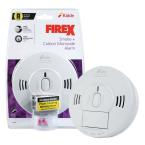Homeowner 101: Winterizing
- Sophie Crash

- Feb 2, 2023
- 5 min read

Preparing for the seasons is a particularly important part of home ownership. The consequences of avoiding this important chore can range from higher heating bills to major damage. A minor pest like a bird’s nest in your attic can be annoying. A large dying limb falling on your home can be catastrophic. The winter months can be especially threatening for homeowners in colder climates. Continue reading for the top 7 Homeowner 101 Winterizing tips. Smoke and CO
As the weather gets cold and we run the heater more, a working smoke and carbon monoxide detector becomes vital. A leaking heater has no smell and can silently fill a room with deadly carbon monoxide. Heaters or fireplaces can also cause fires overnight, so a working smoke detector near the source of a heater is crucially important. Aging systems that run on gas (think 1970’s central heating) are especially susceptible to leaks. Check that the batteries in your smoke detectors work today. If your detector does not have a CO detector built-in, purchase at least one for your home and place it close to where your radiator resides, such as a basement or attic. Detectors that run on batteries should be replaced every 7 years, while hardwired ones are typically a ten-year installation.

Window treatments
Plastic shrink wrap will reduce heating costs in the winter. The plastic film comes in kits or rolls and can be cut to the size of your windows. Most attach using double-sided tape, then shrink to size and smooth out with a hairdryer. These are a fantastic choice for homeowners in northern climates but might not be worth the effort for residents in the south. They allow light to enter your home to avoid needing to constantly use heavy curtains.

Vent Treatments
Cover up any exterior vents in the winter months, including foundation vents. This should be done before the weather gets consistently cold in your area to avoid pests taking up residence under your home or inside your walls. Even if you have screens on all your vents, cover them with a solid surface like metal to reduce your energy costs and maintain heat inside your home. This is especially important on the vents leading into your crawlspace since cold winter air circulating will cool your home and can lead to freezing pipes. You can purchase some online, or DIY your own out of sheets of decorative metal. A thick piece of carboard will do in a pinch. There are even some open/close or slider type vents on the market with screens included. However, in my experience these sacrifice durability for temporary convenience. The sliders tend to rust shut, and the grates themselves sometimes bend out of shape as the seasons change. Unless you want to replace these every couple of years, stick with the separate vent cover that is fully removed and stored during the summer months.

Babysit your Pipes
Speaking of covering your vents, you should also cover any exterior plumbing or sprinkler systems. Disconnect all hoses and drain them thoroughly before storing. Cover exposed water spigots with insulated styrofoam or rubber covers. Any pipe that runs along the exterior of the home or is in an unheated area (such as garage, crawlspace, or attic) could potentially freeze during a cold snap if not properly insulated. Check for any missing or damaged insulation on exposed pipes. For residents in warmer climates, a hard freeze can cause unseen damage in pipes like these because building standards do not address very cold winters. A good way to avoid this is to keep the water in the pipes moving overnight by leaving a faucet dripping slowly.

Address your Trees
Removing overhanging limbs is a proactive responsibility of a homeowner. Limbs should remain at least 6 feet away from the home, and large limbs from aging trees should be removed. A winter storm can break a neglected tree and cause damage ranging from missing shingles to a destroyed roof. Winter is the best time of the year to prune or remove trees. Most trees are dormant in the winter and can handle pruning during this time. Wait until the tree has lost all the leaves before pruning, and make sure the weather is appropriate on the day you work. Hire a bonded professional if the tree hangs over your home or could damage any surrounding property. Consult your local laws to determine if certain branches near power lines or a neighbor’s home are your responsibility.










Comments